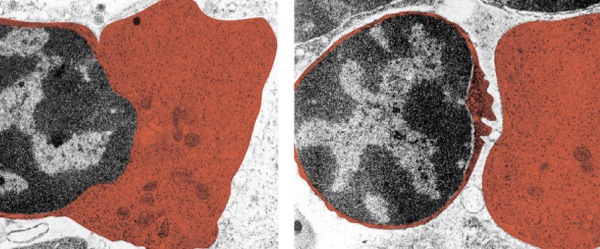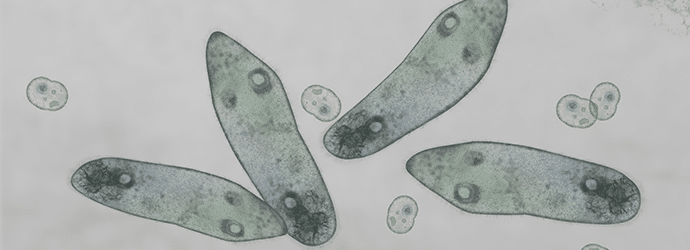Most of the microscopes you will encounter in your laboratories will be ‘upright’. In other words, they are assembled (from top to bottom) in the order of; eyepieces, objectives (on revolving nosepiece), stage, sub-stage condenser, diaphragm and base.
However, there are two other types of light microscopes you will perhaps encounter (and use) and it is useful to know the differences and when to use one type over another.
Compound binocular
The upright microscope may also be referred to as a ‘compound binocular microscope’. This simply means it has its own light source, more than one lens and has two eyepieces.
Upside down, but not literally!
An inverted microscope is, well, upside down really (but not literally- that would be stupid!). The light source is above the stage pointing downwards, whilst the objectives are to be found under the stage. The stage itself is usually fixed without XY controls. The inverted microscope is mainly used for imaging of live cells in containers such as culture flasks as opposed to slides. The main reason an inverted microscope is used for live cell imaging is that the objectives of the microscope are as close as possible to the surface on which the cells or tissue are growing. The objectives on inverted microscopes are also slightly different compared to an upright microscope.
Enjoying this article? Get hard-won lab wisdom like this delivered to your inbox 3x a week.

Join over 65,000 fellow researchers saving time, reducing stress, and seeing their experiments succeed. Unsubscribe anytime.
Next issue goes out tomorrow; don’t miss it.
Checking cells
You’ll usually find these instruments in cell or tissue culture labs. In cell culture, I used one of these microscopes all of the time- from checking my main cell flasks, to counting cells using haemocytometers, to setting up and checking treatments dishes. In our facility, we also had an inverted microscope which had a fluorescent lamp attached. This was used for checking cells which were transfected with fluorescently labelled viruses. Inverted microscopes can have cameras and/or video cameras attached to them via photo tubes which are usually located on the front or the side of the camera body. For imaging live cells in a flask containing culture medium, it’s usually best to use some kind of contrast microscopy technique such as phase contrast.
In stereo
The final type of microscope you are likely to encounter in your laboratory is a stereo microscope. These are also known as ‘dissecting microscopes’ which is a more descriptive name. You’ll usually find these in tissue culture labs (or ecology labs). One of the major differences between compound light microscopes and stereo microscopes is that the light is reflected off the object in view, or up through a transparent base containing the light (as opposed to light coming through an object).
A continuous range
Some stereo microscopes come with a separate light unit which has one (or two) flexible fibre optic lights to allow the user to illuminate their specimen as needed. Stereo microscopes have two separate eyepieces/objectives which create an effect of depth or 3-D in the object being viewed. Magnification is either fixed (or increased by changing eyepieces), on a turret system, or as a zoom function. The zoom function basically moves the whole eyepiece/objectives configuration vertically offering a continuous range of magnification.
So keep an eye open for these two species of microscope in your own lab habitat- you should find an inverted microscope in the cell culture laboratory (if not your main lab) and a dissecting microscope in your tissue culture or ecology lab.
You made it to the end—nice work! If you’re the kind of scientist who likes figuring things out without wasting half a day on trial and error, you’ll love our newsletter. Get 3 quick reads a week, packed with hard-won lab wisdom. Join FREE here.








